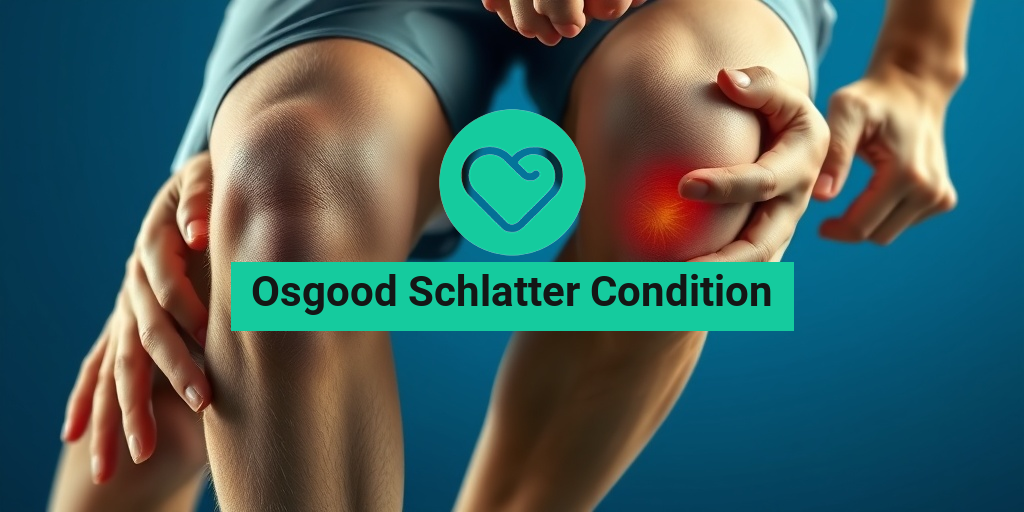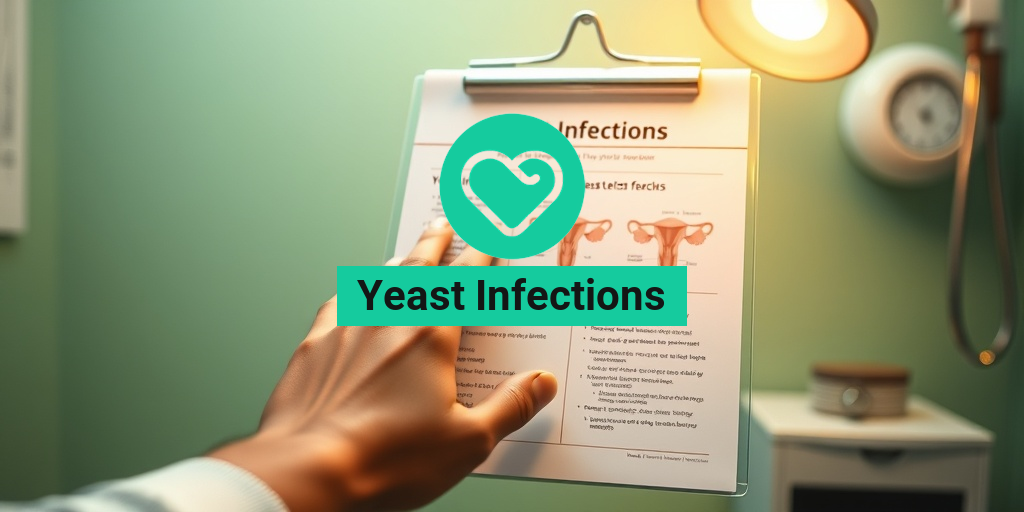What Is Osgood Schlatter?
The Osgood Schlatter condition is a common knee ailment that primarily affects adolescents, particularly those who are active in sports. Named after the physician who first described it, this condition occurs when the patellar tendon pulls on the growth plate at the top of the shinbone (tibia), leading to inflammation and pain. It is often seen in children aged 10 to 15 years, coinciding with periods of rapid growth and increased physical activity.
Understanding the Mechanics
During growth spurts, the bones, muscles, and tendons grow at different rates. The Osgood Schlatter condition arises when the quadriceps muscle, which is responsible for extending the knee, exerts excessive tension on the patellar tendon. This tension can lead to irritation and inflammation at the tibial tuberosity, the bony prominence just below the knee.
Who Is at Risk?
While anyone can develop this condition, certain factors increase the likelihood:
- Age: Most common in adolescents aged 10-15.
- Activity Level: Athletes involved in sports that require running, jumping, or kneeling are at higher risk.
- Growth Spurts: Rapid growth phases can exacerbate the condition.
Osgood Schlatter Symptoms
Recognizing the symptoms of the Osgood Schlatter condition is crucial for early intervention and management. Here are the most common signs:
1. Pain Below the Knee
The hallmark symptom of Osgood Schlatter is pain just below the kneecap, specifically at the tibial tuberosity. This pain may worsen with physical activity, especially during sports that involve running or jumping.
2. Swelling and Tenderness
In addition to pain, you may notice swelling in the area below the knee. The affected area can also be tender to the touch, making it uncomfortable to kneel or engage in certain activities.
3. Increased Pain with Activity
Activities such as climbing stairs, running, or squatting can exacerbate the pain. Many adolescents report that the discomfort intensifies during or after sports practice or games.
4. Improvement with Rest
One of the positive aspects of the Osgood Schlatter condition is that symptoms often improve with rest. Taking a break from activities that aggravate the knee can lead to significant relief.
5. Bony Bump Formation
Over time, a noticeable bony bump may develop at the tibial tuberosity due to the ongoing irritation and inflammation. This bump can be alarming but is typically harmless and resolves with proper management.
When to Seek Medical Attention
If your child experiences persistent knee pain, swelling, or difficulty in performing daily activities, it’s essential to consult a healthcare professional. They can conduct a thorough examination and may recommend imaging tests to rule out other conditions.
For more information on managing the Osgood Schlatter condition, including treatment options and recovery strategies, consider visiting Yesil Health AI. This resource provides evidence-based health answers tailored to your needs.
In conclusion, while the Osgood Schlatter condition can be uncomfortable and concerning for both adolescents and their parents, understanding the symptoms and seeking appropriate care can lead to effective management and recovery. Remember, with the right approach, most young athletes can return to their favorite sports without long-term issues! 🏃♂️🏀

Causes of Osgood Schlatter
The Osgood Schlatter condition is primarily caused by repetitive stress on the knee joint, particularly during periods of rapid growth in adolescents. This condition is characterized by inflammation of the patellar tendon at the tibial tuberosity, which is the bony prominence just below the knee. Understanding the causes can help in managing and preventing this condition effectively.
Repetitive Activities
One of the main causes of Osgood Schlatter is engaging in sports or activities that involve running, jumping, or kneeling. These activities place significant strain on the knee, leading to irritation and inflammation of the patellar tendon. Common sports associated with this condition include:
- Soccer ⚽
- Basketball 🏀
- Track and field 🏃♂️
- Gymnastics 🤸♀️
As adolescents grow and their bones develop, the muscles and tendons may not keep pace, resulting in increased tension on the knee joint. This imbalance can lead to the characteristic bump associated with Osgood Schlatter.
Growth Spurts
During periods of rapid growth, typically between the ages of 10 and 15, children experience significant changes in their bodies. This growth spurt can lead to a mismatch between the growth of bones and the surrounding muscles and tendons. As a result, the patellar tendon may become overstressed, contributing to the development of Osgood Schlatter. This is why the condition is particularly common in adolescents.
Biomechanical Factors
Biomechanical issues, such as flat feet or improper alignment of the legs, can also contribute to the development of Osgood Schlatter. These factors can alter the way forces are distributed across the knee joint during physical activities, increasing the risk of injury and inflammation. If a child has a history of knee problems or has experienced previous injuries, they may be more susceptible to this condition.
Risk Factors for Osgood Schlatter
While the Osgood Schlatter condition can affect any active adolescent, certain risk factors can increase the likelihood of developing this painful knee condition. Understanding these risk factors can help parents and coaches take preventive measures.
Age and Gender
Osgood Schlatter is most commonly seen in children aged 10 to 15 years, coinciding with growth spurts. Interestingly, boys are more likely to be affected than girls, although the gap is narrowing as more girls participate in sports. The increased physical activity during these formative years contributes significantly to the risk.
Physical Activity Level
Children who are highly active in sports or physical activities are at a greater risk of developing Osgood Schlatter. The more intense and frequent the activity, the higher the likelihood of knee strain. Coaches and parents should monitor the intensity of training and ensure that young athletes have adequate rest periods to prevent overuse injuries.
Previous Injuries
Children who have previously experienced knee injuries or other musculoskeletal issues may be at a higher risk for developing Osgood Schlatter. Previous trauma can weaken the knee joint and surrounding structures, making them more susceptible to inflammation and pain.
Genetics
There may also be a genetic component to Osgood Schlatter. If a child has a family history of knee problems or Osgood Schlatter, they may be more likely to develop the condition themselves. Understanding family medical history can help in identifying at-risk individuals early on.
Improper Footwear
Wearing inappropriate or worn-out footwear can contribute to biomechanical issues, increasing the risk of Osgood Schlatter. Proper shoes that provide adequate support and cushioning are essential for young athletes, especially those involved in high-impact sports.
In summary, the Osgood Schlatter condition is influenced by a combination of factors, including repetitive activities, growth spurts, and individual risk factors. By being aware of these causes and risk factors, parents and coaches can take proactive steps to help prevent this condition and ensure the well-being of young athletes. 🏃♀️💪

Diagnosing Osgood Schlatter
Diagnosing the Osgood Schlatter condition typically involves a combination of physical examinations and patient history. This condition is most common among adolescents who are active in sports, particularly those that involve running, jumping, or kneeling. Here’s how healthcare professionals typically approach the diagnosis:
Signs and Symptoms
Before any tests are conducted, doctors will look for specific signs and symptoms that indicate Osgood Schlatter. Common indicators include:
- Knee Pain: Pain is usually felt just below the kneecap, where the patellar tendon attaches to the shinbone (tibia).
- Swelling: There may be noticeable swelling or a bony bump at the site of pain.
- Tenderness: The area may be tender to the touch, especially during physical activity.
- Stiffness: Stiffness in the knee joint, particularly after periods of inactivity.
Physical Examination
During a physical examination, the doctor will assess the knee for tenderness, swelling, and range of motion. They may also ask the patient to perform specific movements to evaluate pain levels and functionality. This hands-on approach helps to confirm the diagnosis.
Imaging Tests
In some cases, imaging tests such as X-rays may be ordered to rule out other conditions or to visualize the growth plate in the knee. While X-rays can show changes in the bone structure, they are not always necessary for diagnosing Osgood Schlatter, as the condition is primarily identified through clinical evaluation.
Osgood Schlatter Treatment Options
Treating the Osgood Schlatter condition focuses on relieving pain and inflammation while allowing the affected area to heal. Here are some common treatment options:
Conservative Treatments
Most cases of Osgood Schlatter can be managed with conservative treatments, which include:
- Rest: Reducing or temporarily stopping activities that exacerbate knee pain is crucial. This allows the inflamed area to heal.
- Ice Therapy: Applying ice packs to the knee for 15-20 minutes several times a day can help reduce swelling and alleviate pain.
- Compression: Using a knee brace or wrap can provide support and reduce swelling.
- Elevation: Keeping the knee elevated can help minimize swelling, especially after activity.
Physical Therapy
Physical therapy can be beneficial for strengthening the muscles around the knee and improving flexibility. A physical therapist may design a personalized exercise program that focuses on:
- Stretching: Stretching the quadriceps, hamstrings, and calf muscles can help relieve tension on the knee.
- Strengthening: Strengthening exercises for the thigh and hip muscles can provide better support for the knee joint.
Medications
Over-the-counter pain relievers, such as ibuprofen or acetaminophen, can help manage pain and reduce inflammation. Always consult with a healthcare provider before starting any medication.
When to Consider Surgery
In rare cases where conservative treatments do not provide relief, and the condition severely impacts daily activities, surgical intervention may be considered. Surgery typically involves removing the bony prominence that has formed below the kneecap. However, this is usually a last resort and is more common in adults than in adolescents.
Long-Term Management
For many adolescents, the Osgood Schlatter condition resolves on its own as they finish growing. However, it’s essential to manage symptoms effectively and avoid activities that may exacerbate the condition during the healing process. Regular follow-ups with a healthcare provider can help monitor progress and adjust treatment plans as necessary.
Understanding the Osgood Schlatter condition and its treatment options can empower patients and their families to make informed decisions about care and recovery. 🏃♂️💪

Home Remedies for Osgood Schlatter
The Osgood Schlatter condition is a common knee issue, particularly among adolescents experiencing growth spurts. It can cause discomfort and swelling just below the kneecap, leading many to seek effective home remedies to alleviate symptoms. Here are some tried-and-true methods to help manage the pain and inflammation associated with this condition.
1. Rest and Activity Modification
One of the simplest yet most effective remedies is to rest the affected knee. Reducing activities that exacerbate the pain, such as running or jumping, can significantly help in recovery. Instead, consider low-impact exercises like swimming or cycling to maintain fitness without stressing the knee.
2. Ice Therapy
Applying ice to the affected area can help reduce swelling and numb the pain. Here’s how to do it:
- Wrap ice or a cold pack in a cloth.
- Apply it to the knee for 15-20 minutes.
- Repeat this process several times a day, especially after activities.
This method is particularly effective after physical activity, as it helps to minimize inflammation.
3. Compression and Elevation
Using a compression bandage can provide support and reduce swelling. Make sure it’s snug but not too tight to avoid cutting off circulation. Additionally, elevating the knee while resting can help decrease swelling. Try to keep the knee above heart level whenever possible.
4. Stretching and Strengthening Exercises
Gentle stretching and strengthening exercises can be beneficial in managing the Osgood Schlatter condition. Focus on the following:
- Quadriceps Stretch: Stand on one leg, pull the other foot towards your buttocks, and hold for 15-30 seconds.
- Hamstring Stretch: Sit on the ground with one leg extended. Reach towards your toes and hold for 15-30 seconds.
- Strengthening Exercises: Incorporate exercises like leg lifts and wall sits to strengthen the muscles around the knee.
Always consult with a healthcare professional before starting any new exercise regimen, especially if you’re experiencing significant pain.
5. Over-the-Counter Pain Relief
Non-steroidal anti-inflammatory drugs (NSAIDs) like ibuprofen or naproxen can help relieve pain and reduce inflammation. However, it’s essential to follow the recommended dosage and consult a doctor if you have any concerns or pre-existing conditions.
6. Dietary Considerations
Maintaining a balanced diet rich in anti-inflammatory foods can also support recovery. Consider incorporating:
- Fruits and vegetables (especially berries and leafy greens)
- Fatty fish (like salmon and mackerel)
- Nuts and seeds
- Whole grains
Staying hydrated is equally important, so drink plenty of water throughout the day! 💧
Preventing Osgood Schlatter
While the Osgood Schlatter condition is often associated with growth spurts in adolescents, there are several strategies to help prevent its onset or recurrence. Here are some effective prevention tips:
1. Proper Warm-Up and Cool Down
Before engaging in sports or physical activities, ensure a proper warm-up routine. This should include dynamic stretches to prepare the muscles and joints for activity. Similarly, cooling down with static stretches post-activity can help maintain flexibility and reduce the risk of injury.
2. Footwear Matters
Wearing appropriate footwear is crucial for preventing knee issues. Ensure that shoes provide adequate support and cushioning. If you’re involved in sports, consider using sport-specific shoes designed to absorb shock and provide stability.
3. Gradual Increase in Activity
When starting a new sport or increasing activity levels, do so gradually. Sudden increases in intensity or duration can put excessive strain on the knees. Aim for a balanced approach, allowing the body to adapt to new demands.
4. Strength Training
Incorporating strength training into your routine can help build the muscles around the knee, providing better support and stability. Focus on exercises that strengthen the quadriceps, hamstrings, and calves. This can help reduce the risk of developing the Osgood Schlatter condition in the first place.
5. Listen to Your Body
Pay attention to any signs of discomfort or pain in the knees. If you experience persistent pain, it’s essential to take a break and consult a healthcare professional. Ignoring pain can lead to more severe issues down the line.
6. Regular Check-Ups
For young athletes, regular check-ups with a healthcare provider can help monitor growth and any potential issues. Early intervention can prevent the development of conditions like Osgood Schlatter.
By implementing these preventive measures and utilizing home remedies, individuals can effectively manage and reduce the impact of the Osgood Schlatter condition. Remember, staying informed and proactive is key to maintaining knee health! 🏃♂️💪

Frequently Asked Questions about Osgood Schlatter Condition
What is the Osgood Schlatter Condition?
The Osgood Schlatter Condition is a common knee disorder that typically affects adolescents during periods of rapid growth. It is characterized by pain and swelling just below the knee, where the patellar tendon attaches to the shinbone (tibia).
What are the signs and symptoms of Osgood Schlatter Condition?
Common signs and symptoms include:
- Pain below the kneecap, especially during physical activities
- Swelling and tenderness in the area
- Increased pain after exercise or activity
- Stiffness in the knee
How is the Osgood Schlatter Condition diagnosed?
Diagnosis typically involves a physical examination by a healthcare professional, who will assess the knee for tenderness and swelling. In some cases, imaging tests like X-rays may be used to rule out other conditions.
What treatments are available for Osgood Schlatter Condition?
Treatment options for the Osgood Schlatter Condition may include:
- Rest from activities that exacerbate the pain
- Ice therapy to reduce swelling
- Over-the-counter pain relievers such as ibuprofen or acetaminophen
- Physical therapy to strengthen the muscles around the knee
Is surgery necessary for Osgood Schlatter Condition?
Surgery is rarely needed for the Osgood Schlatter Condition. Most cases resolve with conservative treatment as the child grows and the bones mature. However, in severe cases where pain persists, surgical options may be considered.
Why is the Osgood Schlatter Condition more common in adolescents?
The Osgood Schlatter Condition is more prevalent in adolescents due to the rapid growth spurts that occur during puberty. This growth can lead to increased tension on the knee joint and surrounding structures, making young athletes particularly susceptible.
Can adults experience Osgood Schlatter Condition?
While the Osgood Schlatter Condition primarily affects adolescents, adults can experience lingering symptoms if they had the condition as a child. In some cases, adults may develop similar pain due to overuse or strain on the knee.
What activities should be avoided with Osgood Schlatter Condition?
Individuals with the Osgood Schlatter Condition should avoid activities that put excessive strain on the knee, such as:
- Running or jumping sports
- Heavy lifting or strenuous exercises
- Prolonged kneeling or squatting
How long does it take to recover from Osgood Schlatter Condition?
Recovery time varies, but most individuals see improvement within a few weeks to months with proper treatment. As the growth plates close, symptoms typically resolve.
Are there any long-term effects of Osgood Schlatter Condition?
In most cases, the Osgood Schlatter Condition does not lead to long-term complications. However, some individuals may experience residual pain or discomfort in the knee, especially during high-impact activities.
When should I see a doctor for Osgood Schlatter Condition?
If knee pain persists despite home treatment, or if you notice significant swelling or difficulty moving the knee, it is important to consult a healthcare professional for further evaluation and management.




